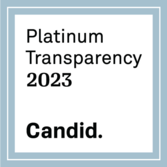2004 Beach Sweeps & Waterway Cleanup Results
BEACHES TRASHED WITH HARMFUL LITTER
2004 Cleanup Results Show “Sweeping” Evidence of Ocean Pollution Citizens Called to Action for COA’s 20th Year of Cleanups - APRIL 23
Sandy Hook and North Wildwood, NJ – Clean Ocean Action (COA) released the results from its three 2004 Beach Sweeps events today, providing clear evidence of marine pollution along New Jersey’s shore and highlighting the need and funding for cleanup programs and stricter enforcement of litter laws. Clean Ocean Action also invites volunteers of all ages to join their 20th year of beach cleanups by participating in the Spring Beach Sweeps on April 23, 2005.
Last year, the Spring and Fall Beach Sweeps and the underwater cleanup, was for the COA- record books, setting new records for debris collected (92,000 pounds), tons removed (45.6), locations covered (147 sites), miles of beaches cleaned (estimated at 85), and volunteer participation (6,656). Dedicated volunteers collected and categorized debris in 66 municipalities. For the complete report, see below.
“COA’s Sweeps removes harmful litter from the environment and, most importantly, collects evidence. The data shows that beach litter remains a problem. It is not only unsightly but also deadly to marine life. Our goal is to reduce sources of litter to ultimately bring an end to the need for Beach Sweeps,” said Cindy Zipf, COA’s Executive Director.
At Sandy Hook, COA discussed specific actions to restore funding for the US Army Corps of Engineers’ Drift Removal Program for the NY/NJ Harbor, an essential program to stop floatable debris before it reaches the ocean. The federal budget proposal undercuts this program.
According to the report, the largest offenders of marine pollution are plastics. In 2004, plastic items contributed to 71% and foam plastics were 9% of the total items collected. The number one item that volunteers picked up during 2004 was plastic caps and lids, totaling 37,795.
“Plastics may make our lives easier, but when they get into the marine environment, they cause harm through entanglement and ingestion,” said Anthony Totah, COA’s South Jersey Coordinator, who compiles the data from the Beach Sweeps. “Each year we see the lethal effects of these items on birds, sea turtles, whales, and dolphins on the shores of the US and here in NJ.”
Cigarette filters slipped to number three on the list of most common items collected, the first time since being listed on the data cards. Possible reasons for this change include weather conditions during the cleanup, volunteers focusing on large debris, and smoking sections or partial bans at beaches in New Jersey. Nonetheless, filters are still are large portion of items collected.
New Jersey’s “Dirty Dozen”, which is a list of the top 12 items most frequently collected and recorded at COA’s Beach Sweeps that year, contributed to nearly 66% of the items in 2004. Eight of the 12 items were plastic.
COA compiles a list of the most unusual items found during the Sweeps each year. The 2004 Roster of the Ridiculous includes 563 firecracker or fireworks parts, 182 socks, 42 tennis balls, 5 car bumpers, 4 televisions, and a showerhead.
20 Years of Cleanups
COA’s records show a legacy of volunteer participation and debris collected during the beach cleanups. Nearly 60,000 citizens have participated since they began in 1985. COA has made several observations about the debris. Glass bottles and metal cans dominated the Sweeps in 1985, whereas today, plastic bottles are more common. Aluminum pull-tabs (from beverage cans) were common in earlier days of the cleanups, and in 2004, plastic caps and lids topped the list. Some of the changes observed might be attributed to laws enacted during that time that addresses some of the sources, while other changes are most likely due to increased production and consumer use of some materials, such as plastics.
Beaches Trashed & Clean Sweep Needed – April 23rd
The stormy weather over the winter and early spring brought tons of debris onto the state’s 127 miles of beaches. With the summer season approaching and marine life threatened, volunteers are needed to remove the debris.
“The Beach Sweeps is an excellent opportunity for people to take responsibility for keeping their communities clean, help the environment, and enjoy a day at the beach with thousands of fellow ocean enthusiasts,” said Kari Jermansen, COA’s Outreach Director. “With every Sweep, citizens become aware of their role in creating ‘pointless’ or nonpoint source pollution and learn how to become the solution to this pollution.”
“The thousands of people that volunteer their time at the Sweeps help focus attention on the need for enforcement of laws and education of citizens about this pollution problem,” said Julie Hajdusek, COA’s Education Coordinator.
The 20th Annual Spring Beach Sweeps on Saturday, April 23, 2005, from 9AM to 12:30PM at over 50 locations from South Amboy to Cape May, NJ. This year’s Sweeps are made possible by lead sponsors ShopRite, Verizon, and West Marine. Co-sponsors are Comcast, Conectiv, New Jersey American Water Company, Party With Purpose, Prudential Premier Properties, Starbucks Coffee Company, and Surfrider Foundation – Jersey Shore Chapter.
Volunteers interested in participating in the Spring Beach Sweeps are instructed to bring gloves, dress for the weather (event is rain or shine), and wear sunscreen and hard-soled shoes. Only groups of 15 or more must pre-register by contacting COA or registering online. To register or for a list of Sweeps sites, visit . Or, call 732-872-0111 for sites in Middlesex, Monmouth, and Ocean Counties, or 609-729-9262 for South Jersey sites.
###

